Kyoto Station Shinkansen Guide: Routes to Tokyo, Osaka, and Hiroshima
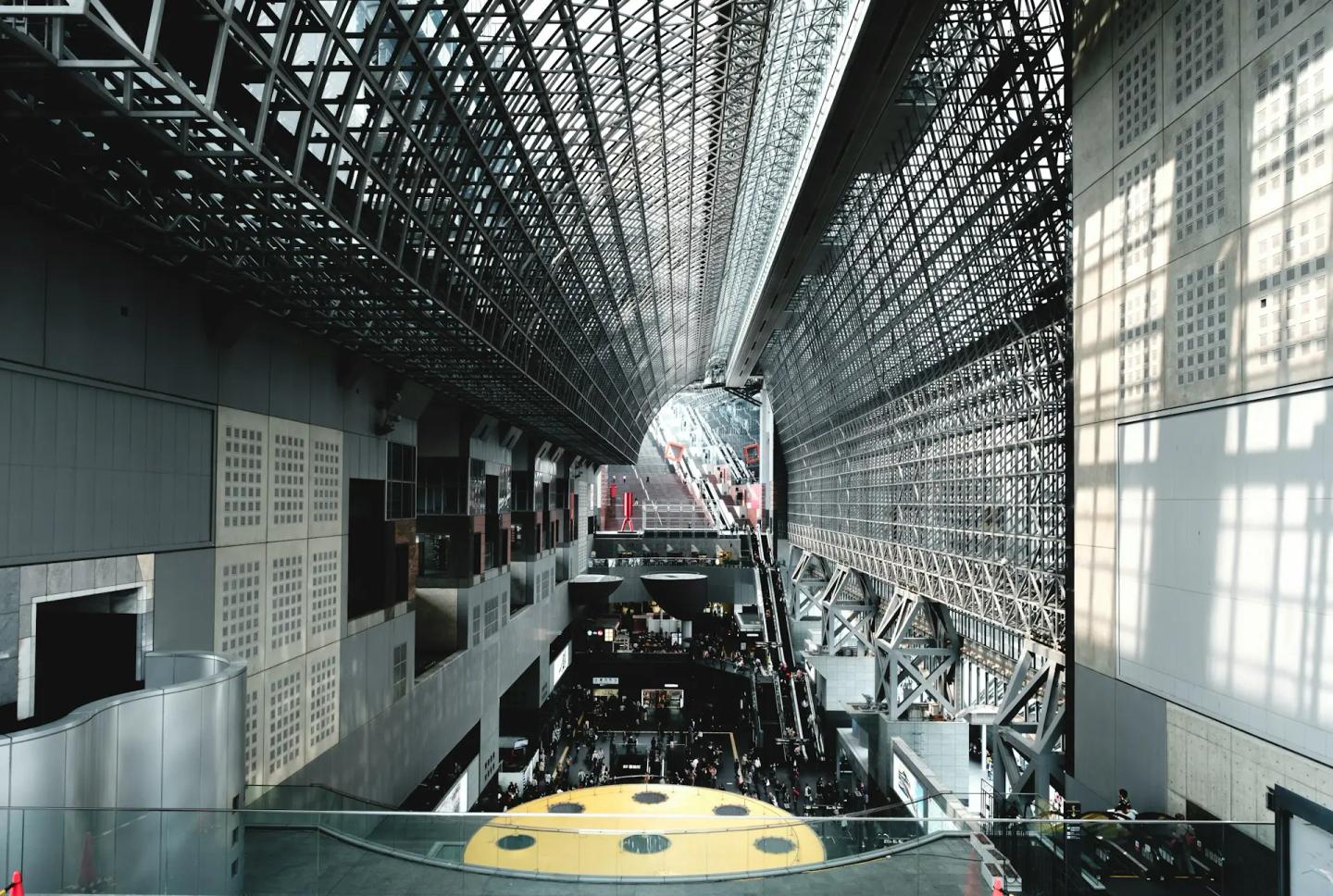
As one of Japan’s busiest and most architecturally unique stations, Kyoto Station offers far more than rail connections. From here, travelers can easily access cities across Japan on the Shinkansen, while enjoying the convenience of shops, restaurants, and services along the way.
In this guide, you’ll find everything you need to know about boarding the Shinkansen, booking tickets, and getting around the station smoothly.
Kyoto Station Overview
Kyoto Station is an impressive architectural marvel and major transportation hub. Completed in 1997, this futuristic complex features a dramatic 70-meter-high glass atrium and houses shopping areas, restaurants, and hotels across 15 stories.
Kyoto Station Map for Foreign Travelers
The station layout can be complex for first-time visitors due to its multiple floors and exits. Checking a Kyoto Station map in advance helps you navigate the station more smoothly, especially when transferring between Shinkansen, JR lines, subways, and buses.
● See More: Kyoto Station Map by West Japan Railway Company
Transportation Services at Kyoto Station
Shinkansen, JR Lines, Subway and Private Railways
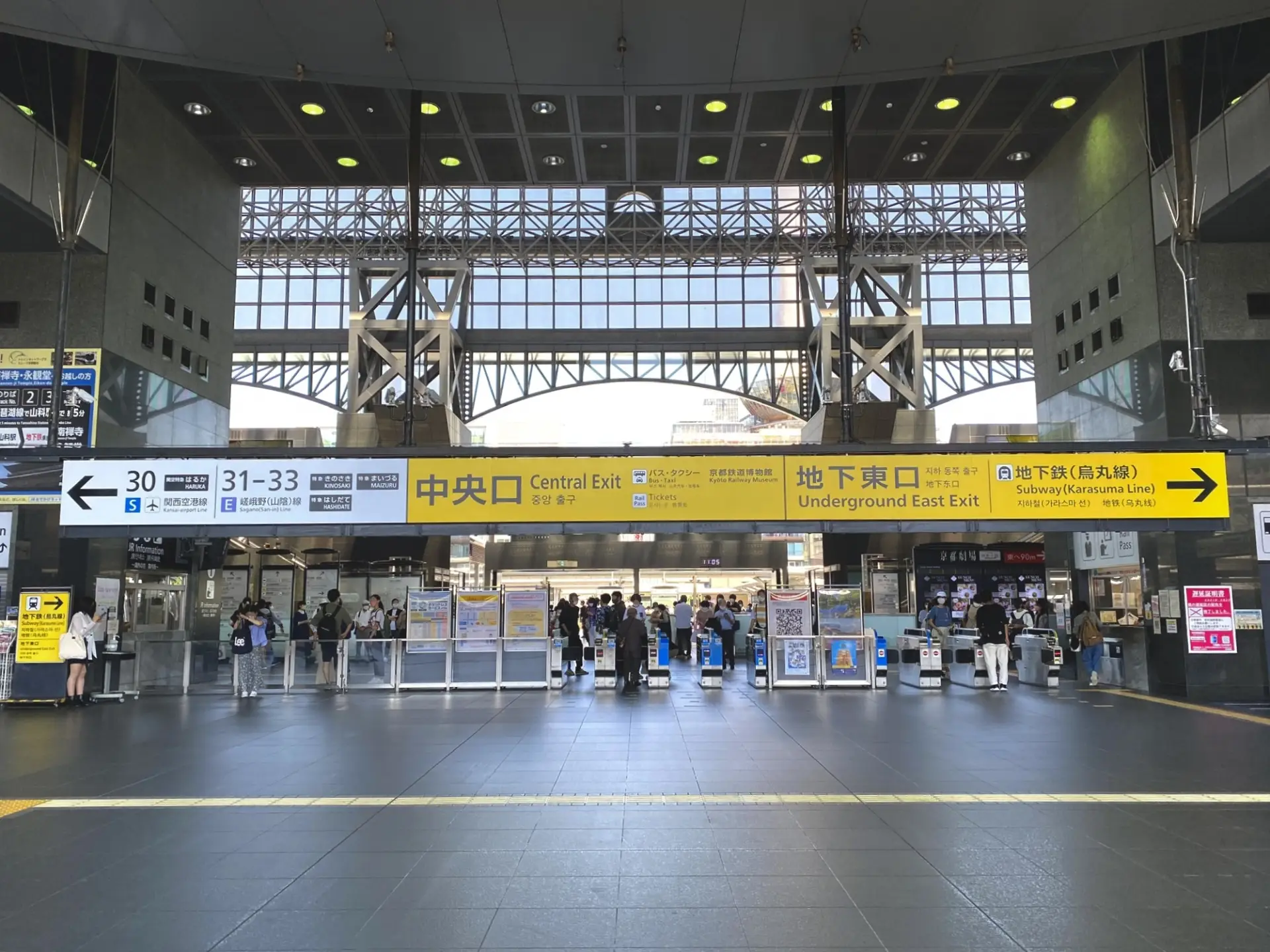
Kyoto Station serves as a major hub for multiple railway systems. The Shinkansen operates from the second floor, while conventional train services run from the first floor and underground levels.
The JR (Japan Railways) network connects Kyoto to regional destinations through several lines. The Kyoto Line heads west toward Osaka, while the Biwako Line travels east to Otsu and Lake Biwa. The Nara Line provides direct access to the ancient capital of Nara, and the Sagano Line connects to the scenic Arashiyama district. The Haruka Limited Express provides direct airport connections to Kansai International Airport.
The Karasuma Subway Line runs north-south through central Kyoto, connecting the station to key city areas. The private Kintetsu railway also operates from Kyoto Station, offering another route to Nara and southern destinations.
Airport Access from Kansai and Itami
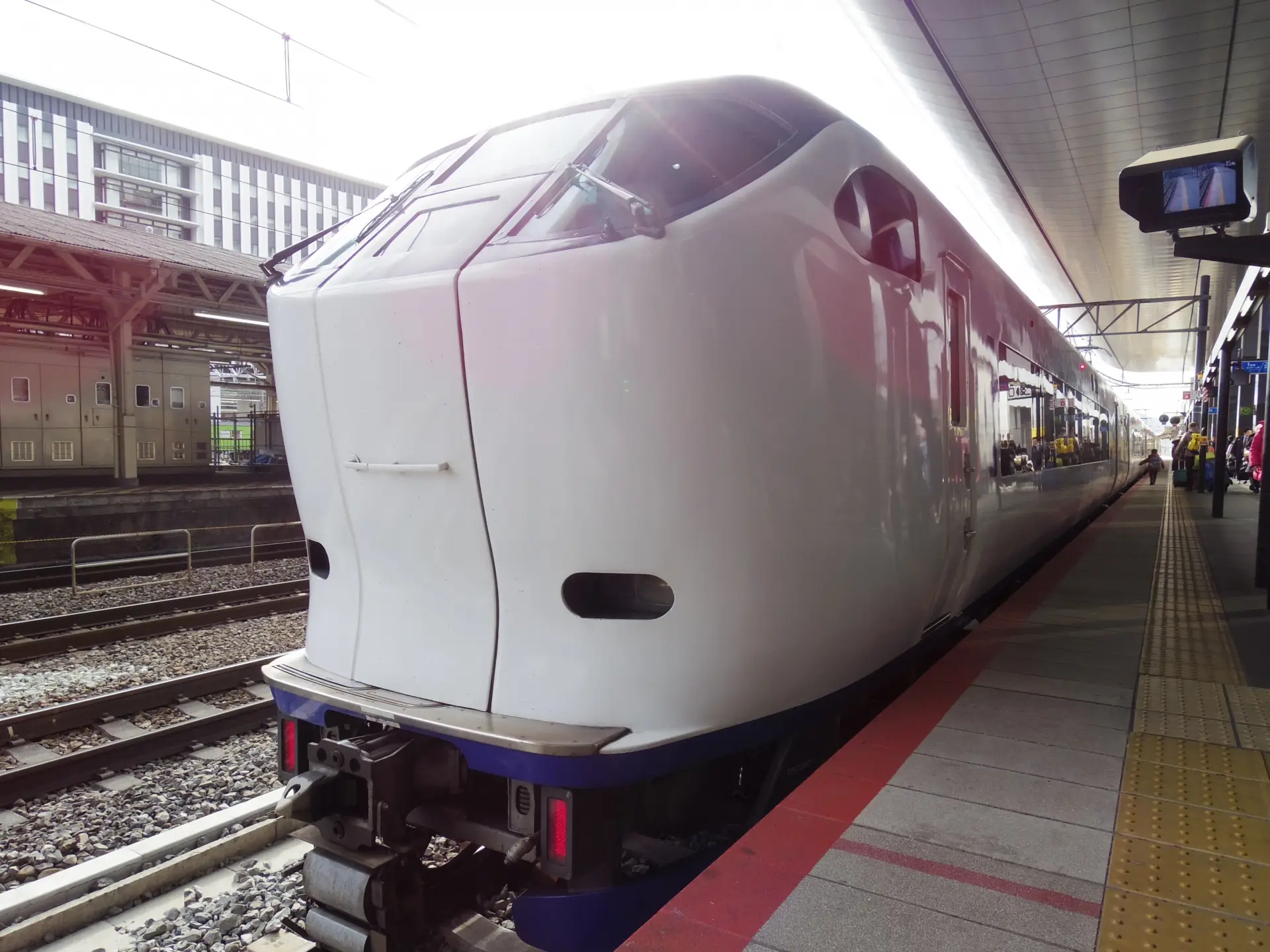
International travelers can reach Kyoto Station directly from both major regional airports. The Haruka Limited Express train provides a comfortable direct connection from Kansai International Airport, taking approximately 75 minutes to reach Kyoto Station.
From Osaka International Airport (Itami), regular airport limousine buses operate between the airport and Kyoto Station. This service offers a convenient alternative for travelers with heavy luggage or those preferring road transport.
Bus and Taxi Transportation Options

Kyoto Station's bus terminal serves as the central hub for the city's comprehensive bus network, connecting travelers to temples, shopping districts, and residential areas throughout Kyoto.
Taxi stands are located on both the north side (Karasuma Exit) and south side (Hachijo Exit) of the station. Expect longer wait times during peak travel periods.
Shinkansen Services at Kyoto Station
Shinkansen Gates and Platforms

The Shinkansen facilities at Kyoto Station are located on the second floor of the main building. Two main ticket gates provide access to the bullet train platforms.
- Central Gate: The main ticket gate for Shinkansen passengers
- South Gate: Often less crowded and can be a good alternative during busy periods
Shinkansen platforms are numbered 11 through 14, accessible via escalators and elevators from the ticket gate area. Clear signage in multiple languages helps international travelers navigate to their designated platform and car number.
- Platform 11-12: For trains heading toward Tokyo (eastbound)
- Platform 13-14: For trains heading toward Osaka and beyond (westbound)
When transferring from the Shinkansen to conventional JR lines, take the escalators down to the first floor after exiting the Shinkansen gates. The transfer process typically takes about five minutes.
Shinkansen Lines

Kyoto Station serves as a major stop on the Tokaido Shinkansen line, which forms the backbone of Japan's high-speed rail network. This line connects Tokyo, Nagoya, Kyoto, and Shin-Osaka, making it essential for travelers exploring Japan's main island.
The Sanyo Shinkansen continues west from Shin-Osaka, and many through-services allow direct travel from Kyoto to destinations like Hiroshima, Kokura, and Hakata (Fukuoka) without changing trains.
Shinkansen Destinations
Kyoto to Tokyo
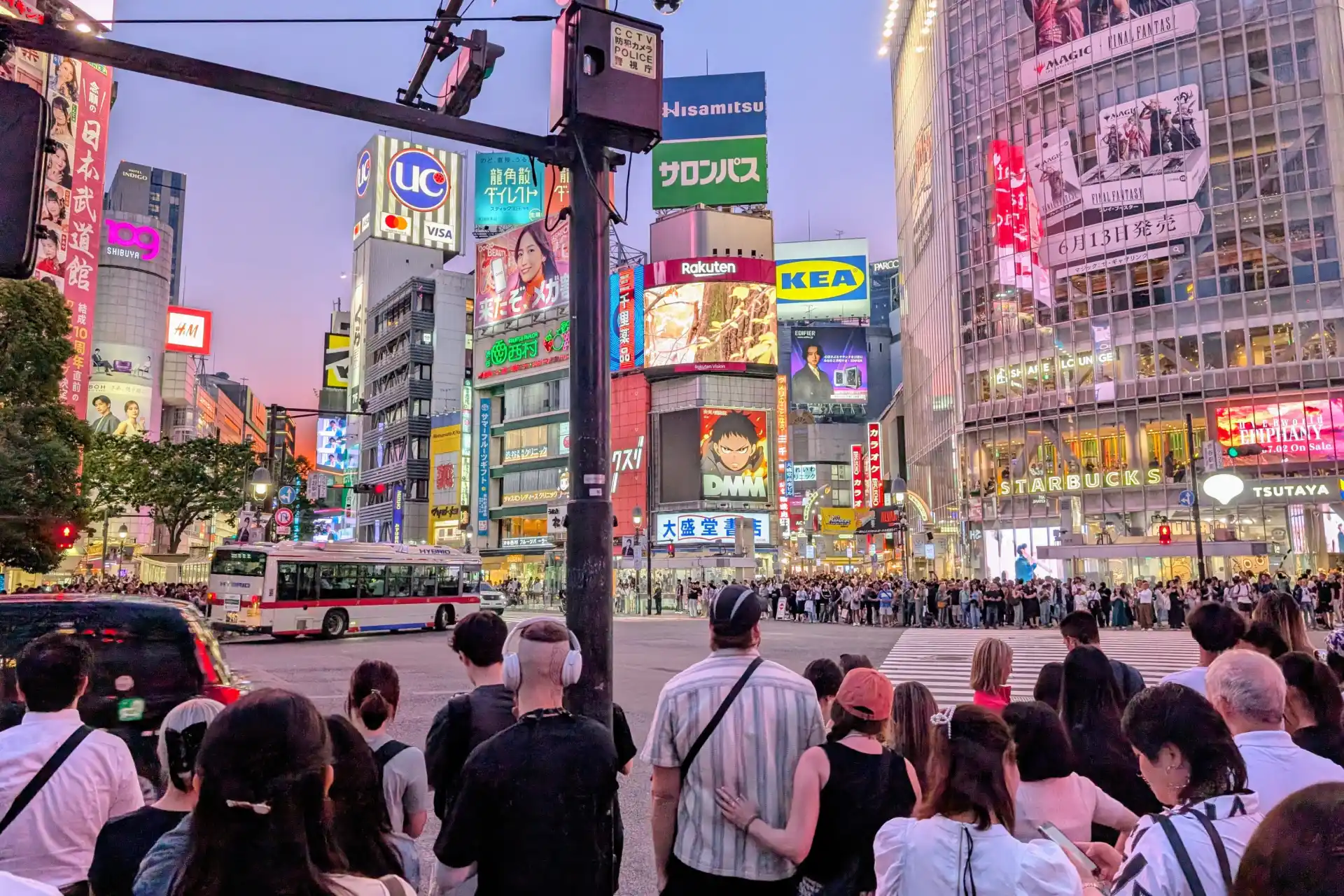
The journey from Kyoto to Tokyo takes between 2 hours and 15 minutes to 3 hours, depending on the service type. Nozomi trains complete the journey in about 2 hours and 15 minutes, while Hikari trains take approximately 2 hours and 45 minutes.
Kyoto to Osaka
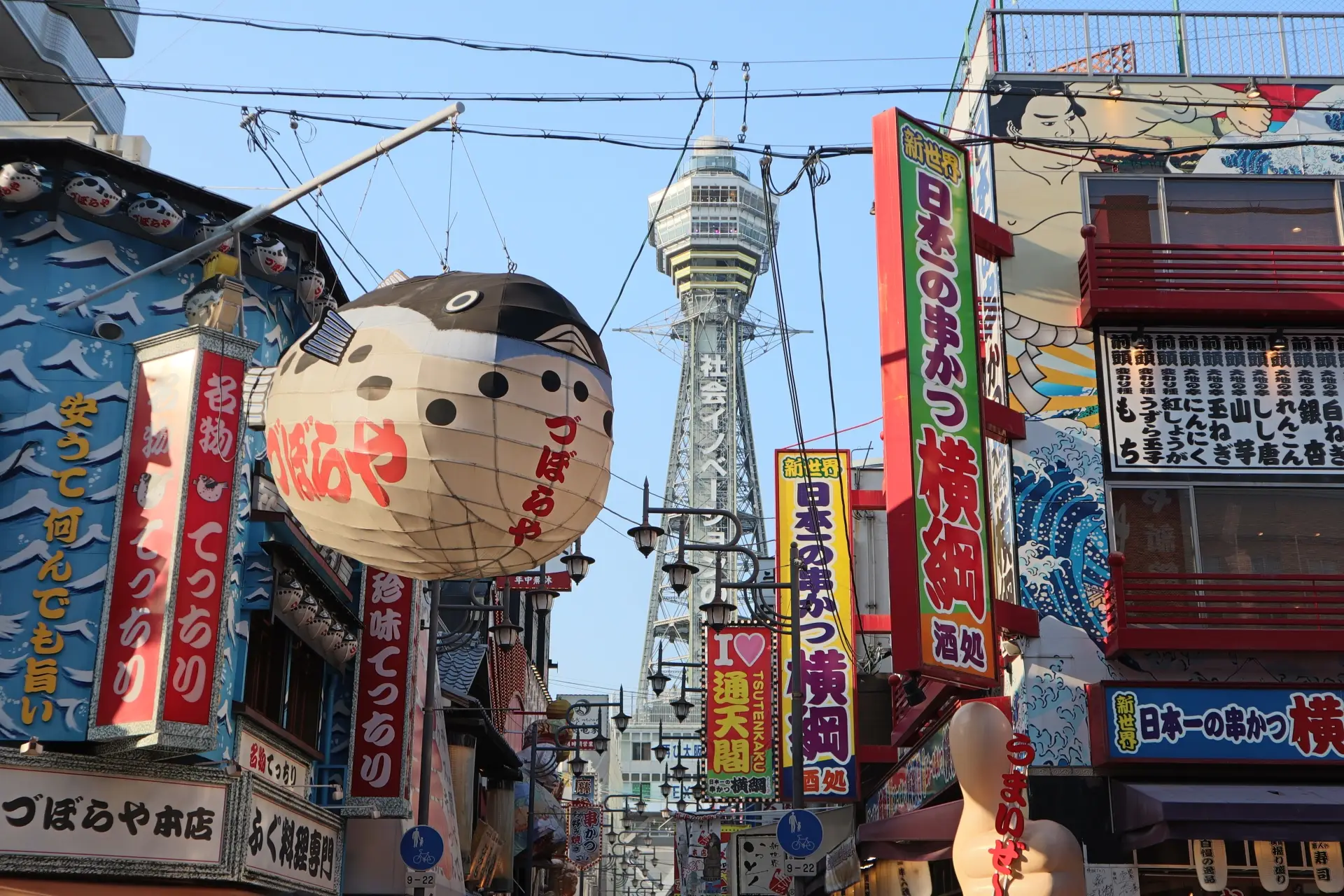
The short journey from Kyoto to Shin-Osaka takes just 15 minutes by Shinkansen. All Shinkansen services stop at Shin-Osaka, providing frequent departure options throughout the day.
Kyoto to Hiroshima
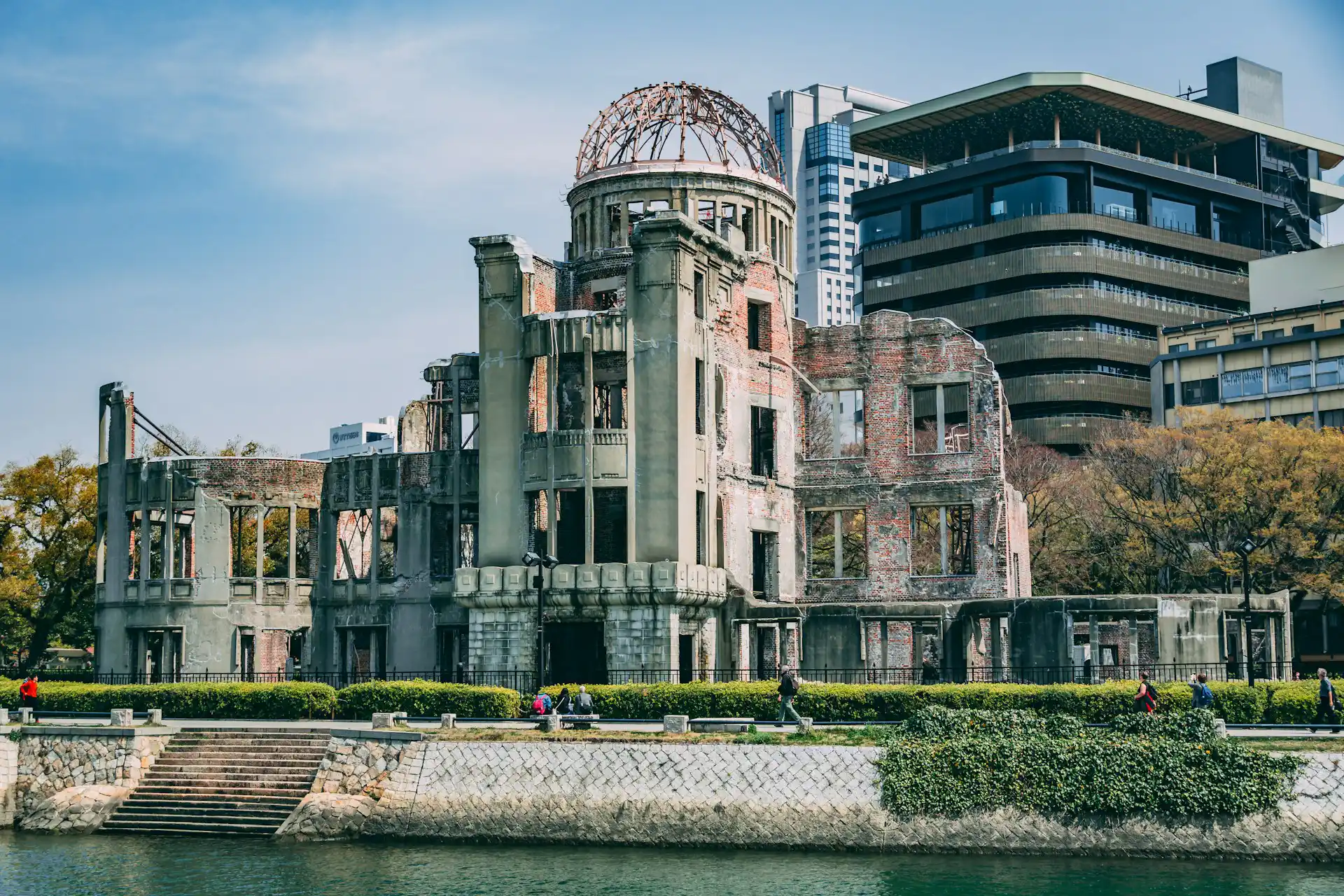
Direct Shinkansen services connect Kyoto to Hiroshima in approximately 1 hour and 35 to 1 hour and 45 minutes via Nozomi trains. Some Sakura and Mizuho trains also provide direct service. Hikari services generally require a transfer at Shin-Osaka. This route provides access to Hiroshima's Peace Memorial Park and nearby Miyajima Island.
Shinkansen Ticket Booking Tips
Where and How to Buy Tickets
Japan Bullet Train Online Booking
For the smoothest travel experience, international visitors should book Shinkansen tickets through Japan Bullet Train. This service offers multilingual support and eliminates language barriers at the station.
Japan Bullet Train provides online reservations with QR code ticketing, exchangeable for paper tickets at any major station. The convenience and customer support make it an excellent choice for foreign travelers.

JR Ticket Offices and Machines

JR ticket offices are located at multiple convenient locations:
- Shinkansen Central Entrance
- Shinkansen Hachijo Entrance
- JR lines Central Entrance
- JR lines West Entrance
Staff can assist with purchases, though English support may be limited during busy periods.
Automated ticketing machines offer English language options and accept cash and IC cards.
Japan Rail Pass Users – What to Know
Travelers with Japan Rail Passes can use most Shinkansen services, with the notable exception of Nozomi and Mizuho trains. Pass holders should use Hikari or Kodama services when traveling from Kyoto.
Tips for Peak Season
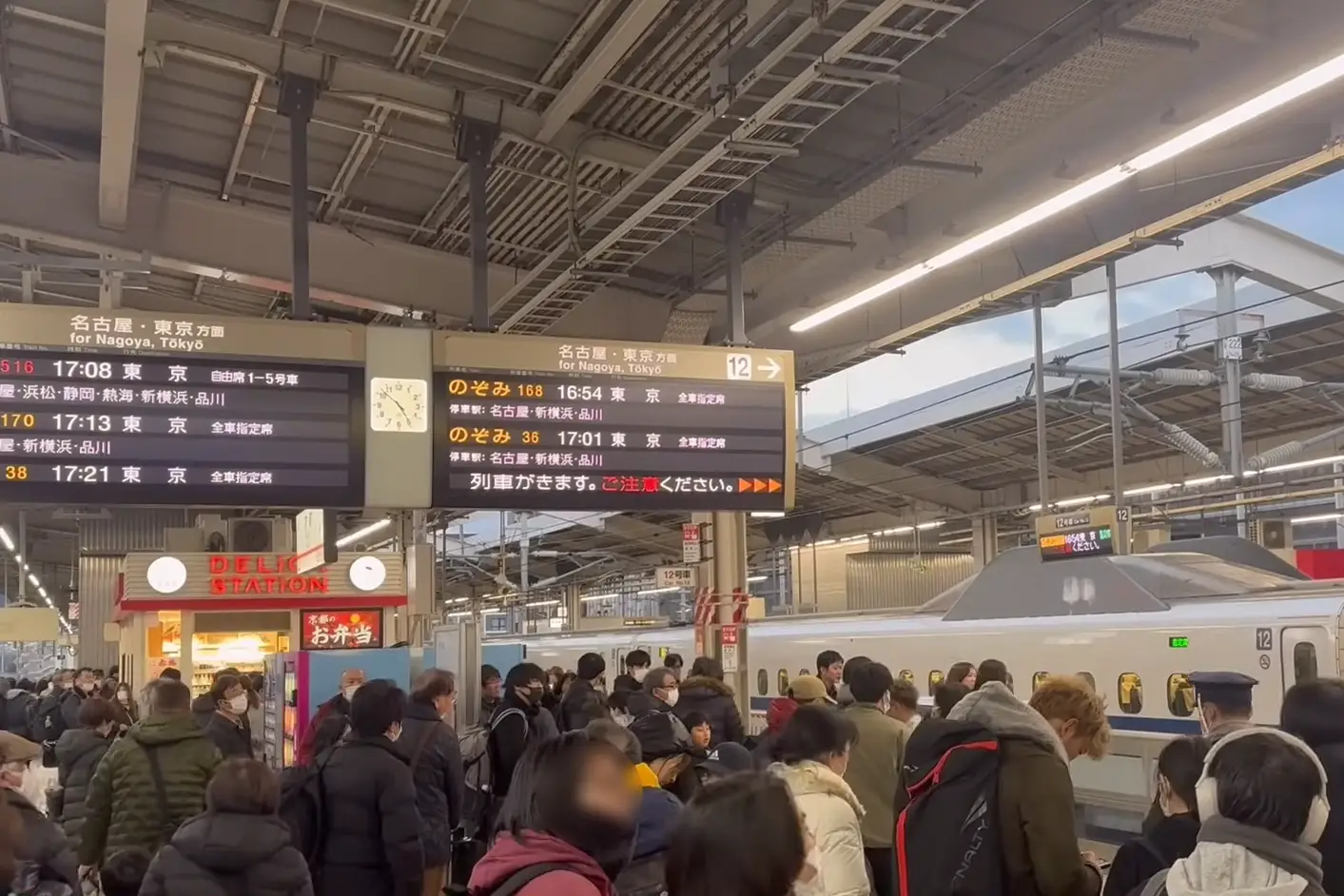
Advance reservations are essential during busy periods including New Year holidays, Golden Week, and Obon season (mid-August). Cherry blossom season (March-April) and autumn foliage season (November-December) are also extremely crowded times requiring early booking.
Kyoto ranks among Japan's top tourist destinations with year-round popularity, making strategic planning necessary throughout the year. Book tickets well in advance regardless of season for the best travel experience.
Station Facilities
Coin Lockers and Luggage Storage
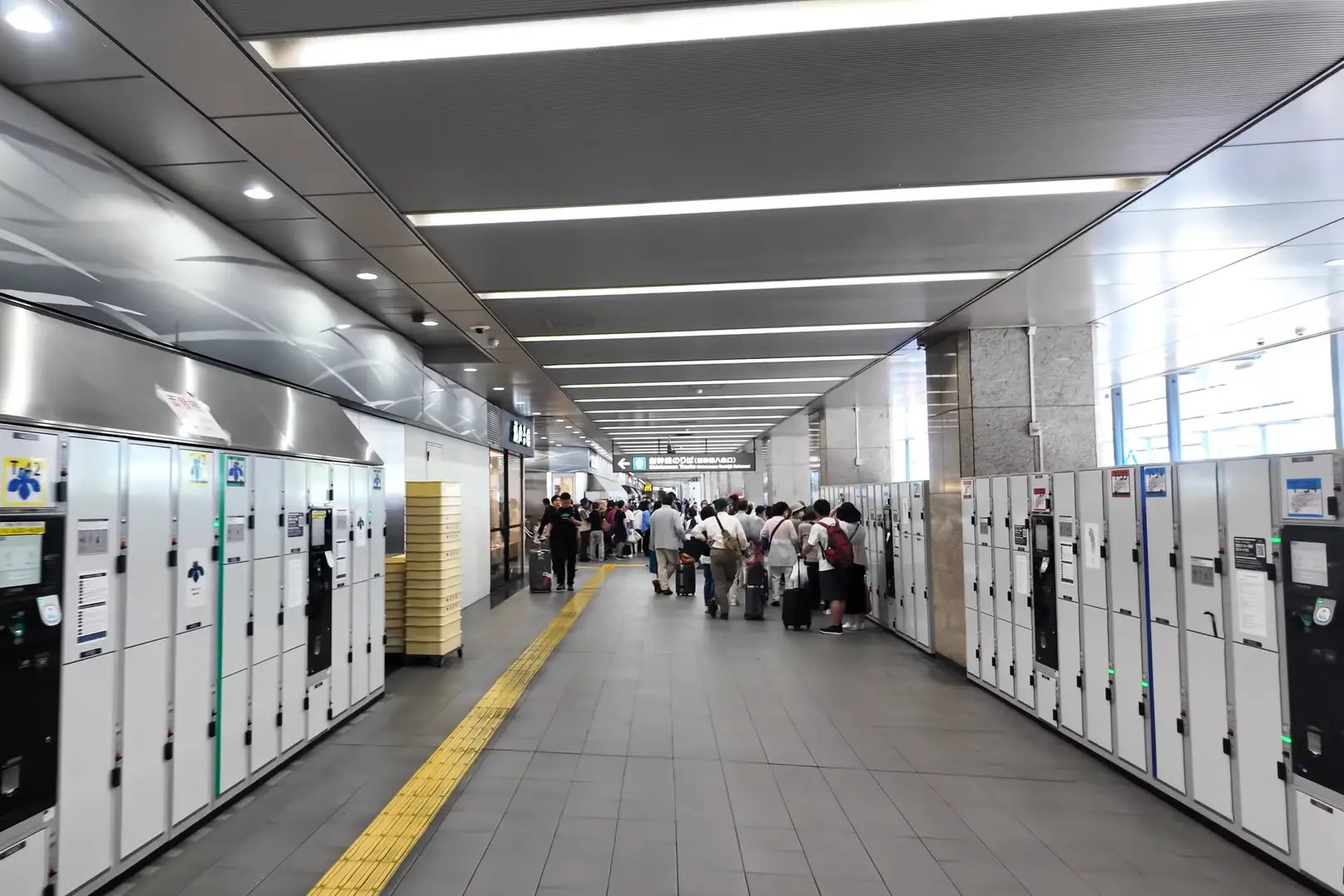
Kyoto Station offers extensive luggage storage options throughout the complex, with over 4,500 coin lockers available both inside and outside the ticket gates. Lockers come in small, medium, and large sizes to accommodate anything from handbags to full-size suitcases.
Popular locker areas include spots near the Shinkansen gates, especially inside the Hachijo Gate area, which is frequently used by travelers. Other locations include the central concourse near JR ticket gates and the basement level near the Karasuma Subway Line.
Many lockers now support IC cards such as Suica, PASMO, and ICOCA, allowing for quick, cashless use. Please note that lockers cannot be reserved in advance.
If lockers are full during busy periods, try checking farther areas such as near Kintetsu Kyoto Station, the Porta underground mall, or JR conventional line areas. For larger items, staffed luggage storage counters are available near the Hachijo Exit and on the basement level of the Karasuma side.
Some services also offer same-day luggage delivery to hotels, letting travelers explore the city hands-free.
Dining Options from Quick Bites to Kyoto Cuisine
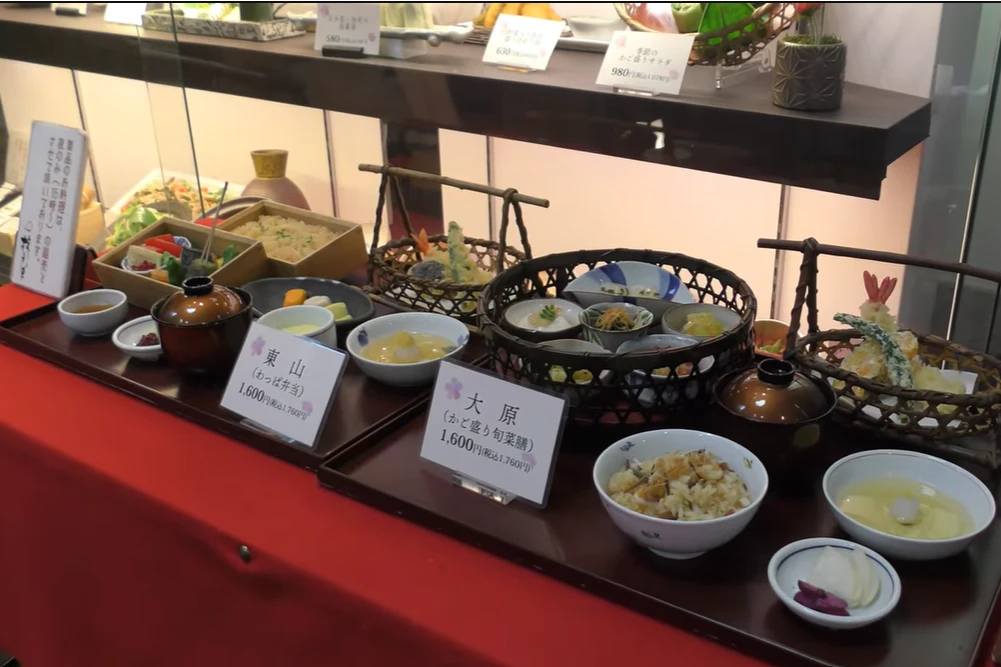
Dining at Kyoto Station covers the entire station building, from upper floors to underground levels. You'll find a wide range of options, from local Kyoto dishes to international favorites.
The upper floors feature restaurants offering traditional Kyoto cuisine such as kaiseki, obanzai, and yuba.
On the 10th floor, Kyoto Ramen Koji hosts famous ramen shops from across Japan, giving visitors a taste of regional noodle styles.
For quick meals, convenience stores, bakeries, and fast food outlets are located throughout the station. The basement level includes a department store food hall with ready-to-eat meals, sweets, and Kyoto specialties—perfect for travelers on the go.
Rest Areas and Smoking Areas

The Skyway and rooftop offer open-air rest spots with city views, though they may be crowded during peak times. Additional seating can be found in waiting areas, cafés, and underground benches.
Smoking is only allowed in designated rooms on Shinkansen platforms. Most restaurants and cafés are non-smoking. Outdoor smoking areas are clearly marked near bus stops and taxi stands, with details available on station signage and the official website.
Foreign Traveler Support at Kyoto Station
Tourist Information Desks and Services
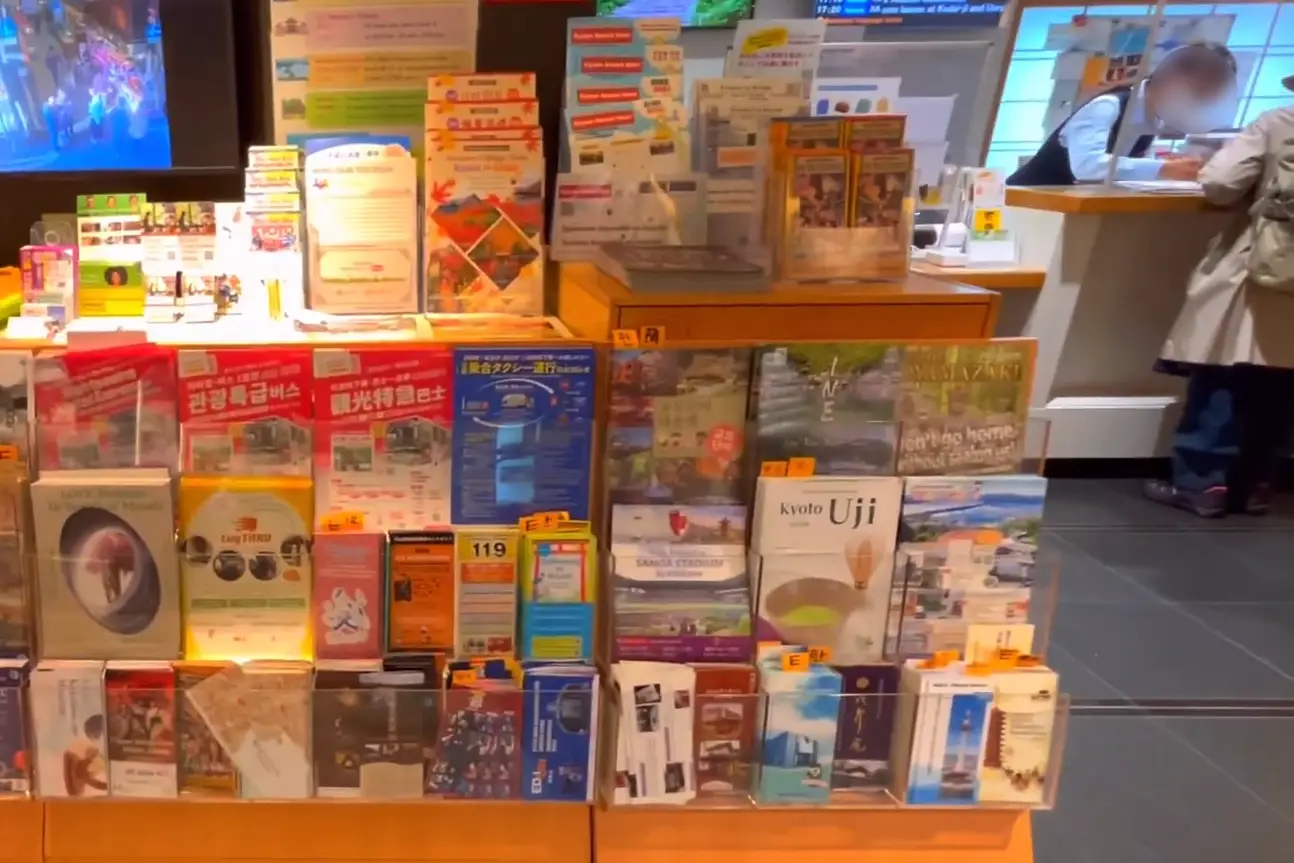
The Kyoto Tourist Information Center, located on the second floor, provides comprehensive support for international visitors. Multilingual staff offer assistance in English, Chinese, Korean, and sometimes other languages, helping with maps, sightseeing advice, and hotel bookings.
The newer KYOTO Travel Center, located on the first floor near the Hachijo Exit, opened in 2023 and offers additional services including tour guide arrangements, luggage storage, and equipment rentals like strollers and mobility aids.
Both centers provide cultural activity information and can help arrange traditional experiences like tea ceremonies or kimono rentals, making them valuable resources for first-time visitors to Kyoto.
Free Wi-Fi, Pocket Wi-Fi, and eSIM Options
Free Wi-Fi is available in designated areas throughout Kyoto Station, including near ticket gates, waiting areas, and the Kyoto Station Building. You can also connect to free Wi-Fi in major commercial facilities such as Isetan, Porta, and The Cube. Registration may be required, and connection quality may vary during busy times.
Japan Wireless offers Pocket Wi-Fi rentals for nationwide use—book online and pick up at airports or request hotel delivery. For digital access, Japan Wireless eSIM provides reliable coverage and can be used immediately upon arrival in Japan.
Currency Exchange and International ATMs
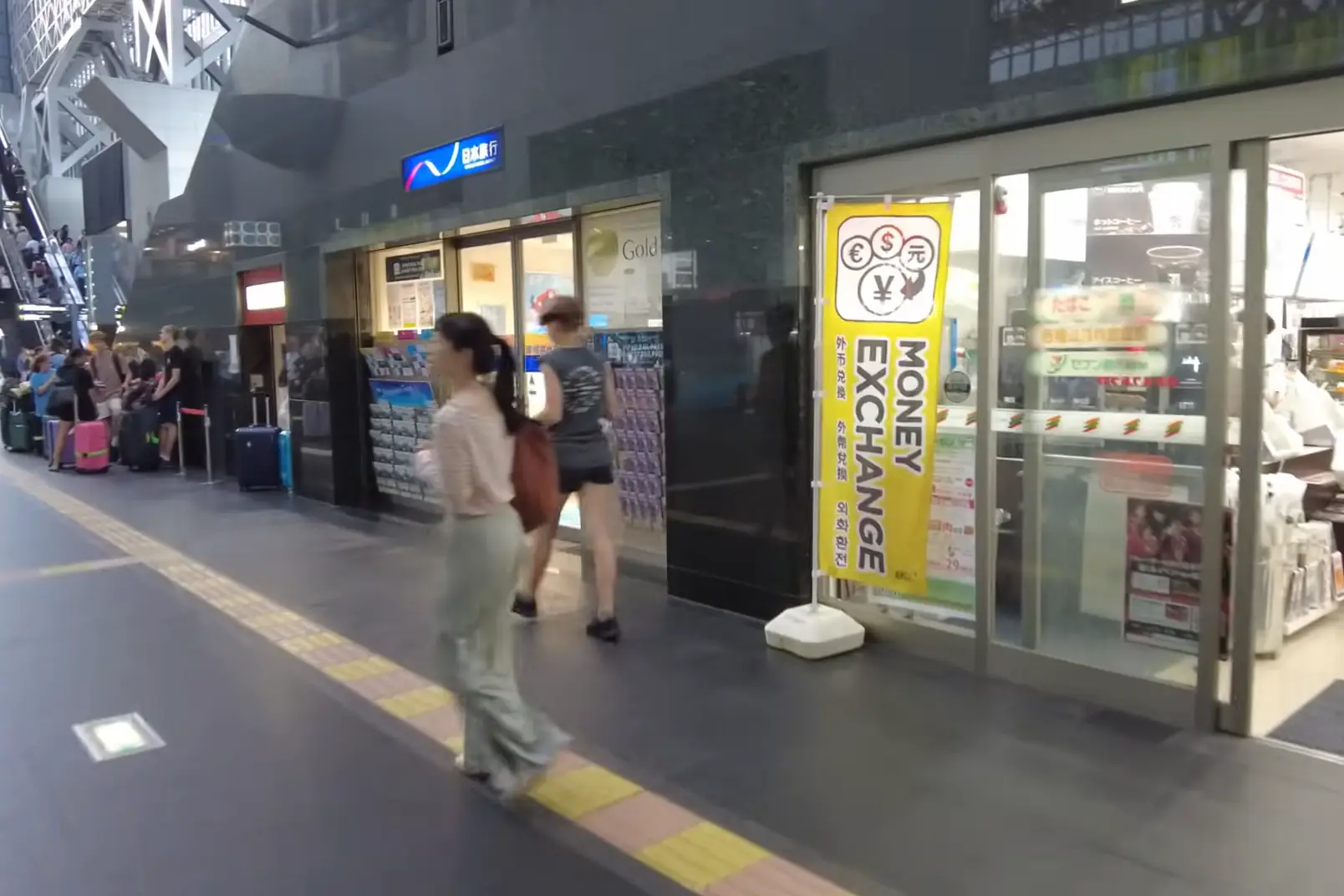
Kyoto Station offers convenient access to cash and currency services for international travelers. ATMs from major banks and convenience store networks are widely available throughout the station, and many accept overseas-issued cards. A particularly high concentration of ATMs can be found around the Hachijo Exit area, making it a reliable spot for cash withdrawals.
Currency exchange counters are also available in and around the station building, providing competitive rates for major currencies. These services are helpful for travelers who prefer to exchange cash in person after arrival.
In addition, IC card machines are located throughout the station, allowing visitors to purchase or recharge transportation cards such as Suica or ICOCA. These cards are essential for convenient access to trains, buses, and even some shops.
Exploring Around Kyoto Station
Places to Visit from Kyoto Station
Kyoto Station is a great base for exploring the city. Many top attractions are nearby or can be reached by bus, train, or subway within 15 to 40 minutes, including temples, scenic areas, and cultural landmarks.
Kyoto Tower

Located directly across from the station’s north exit, Kyoto Tower offers panoramic city views and is a great first stop for orientation.
Higashi Honganji & Nishi Honganji Temples
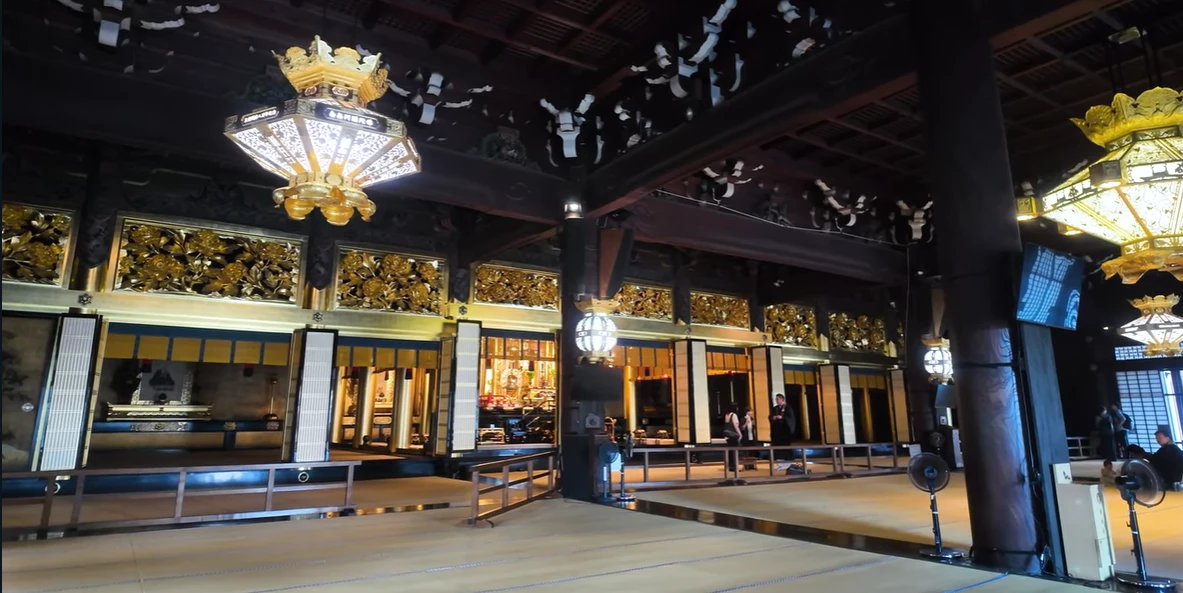
These impressive Buddhist temples are within walking distance of the station. Nishi Honganji is a UNESCO World Heritage Site and features historic halls and serene gardens.
Kinkaku-ji (Golden Pavilion)

One of Kyoto’s most iconic landmarks, this gold-covered temple can be reached in about 40 minutes by bus. It’s famous for its beautiful reflection in a tranquil pond.
Kiyomizu-dera Temple

A stunning hillside temple known for its wooden stage and sweeping city views. Accessible by bus or train in about 30 minutes.
Fushimi Inari Taisha Shrine
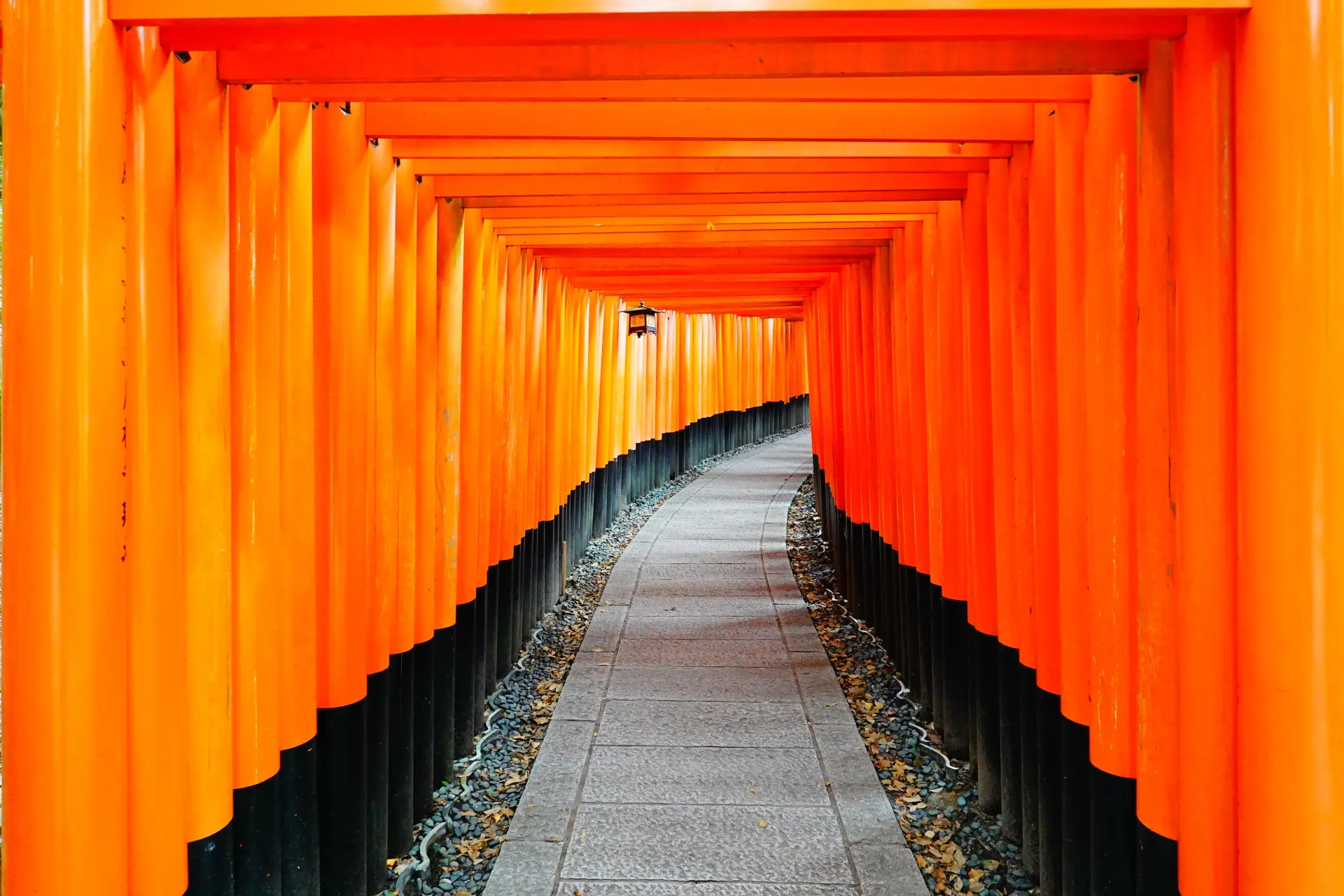
Famous for its thousands of red torii gates, this shrine is about 10 minutes away via JR Nara Line.
Arashiyama
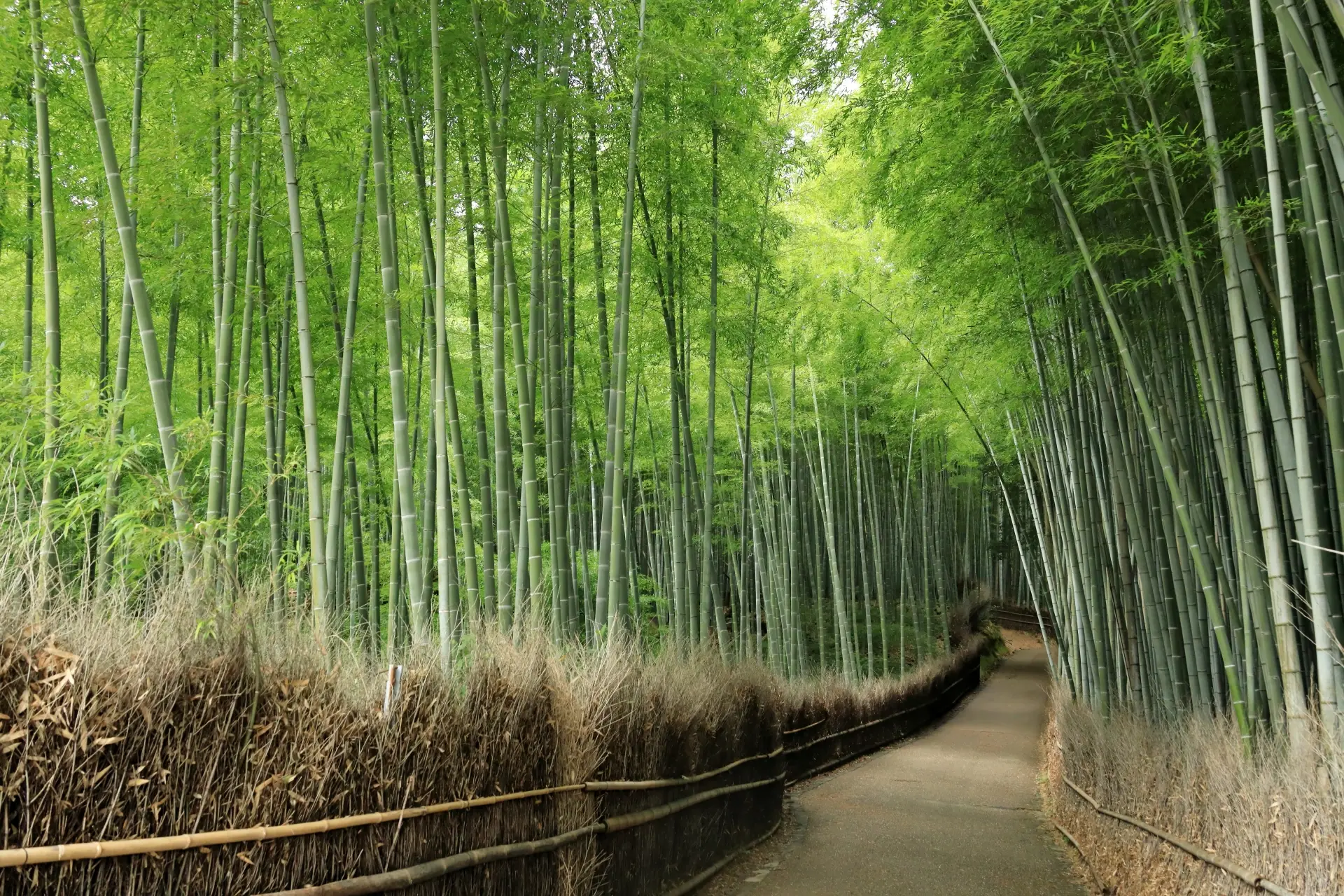
This scenic district with bamboo groves, temples, and river views is about 20–30 minutes away via the JR Sagano Line.
Gion District

Kyoto’s historic geisha district, known for its traditional wooden architecture, can be reached by bus or subway in around 20 minutes.
Ginkaku-ji (Silver Pavilion)

Located in northern Kyoto, this Zen temple and its moss garden are accessible by bus in about 35–40 minutes.
Ryoan-ji Temple
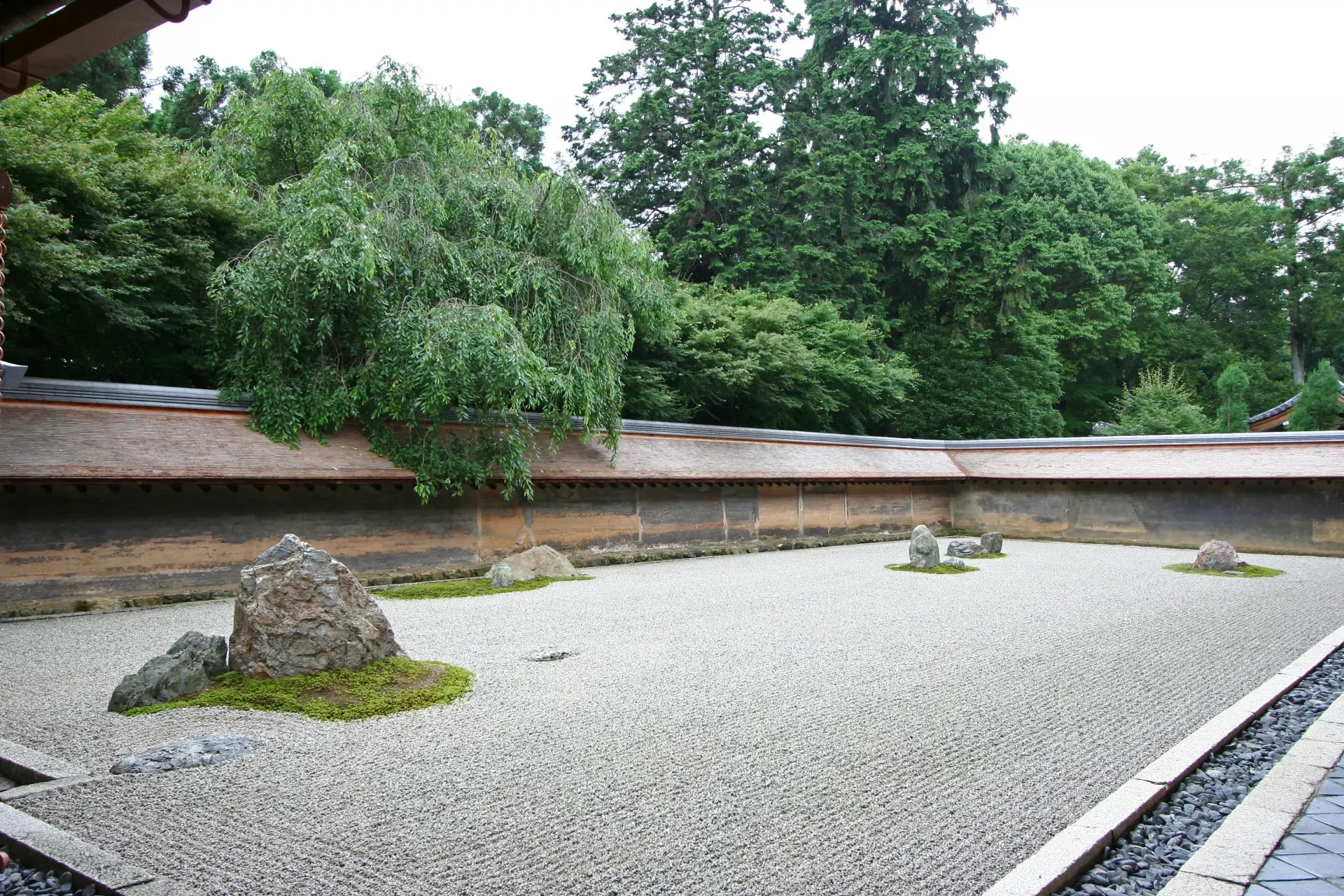
Home to Japan’s most famous rock garden, this Zen temple is reachable by bus or subway in about 40 minutes.
Nanzen-ji Temple
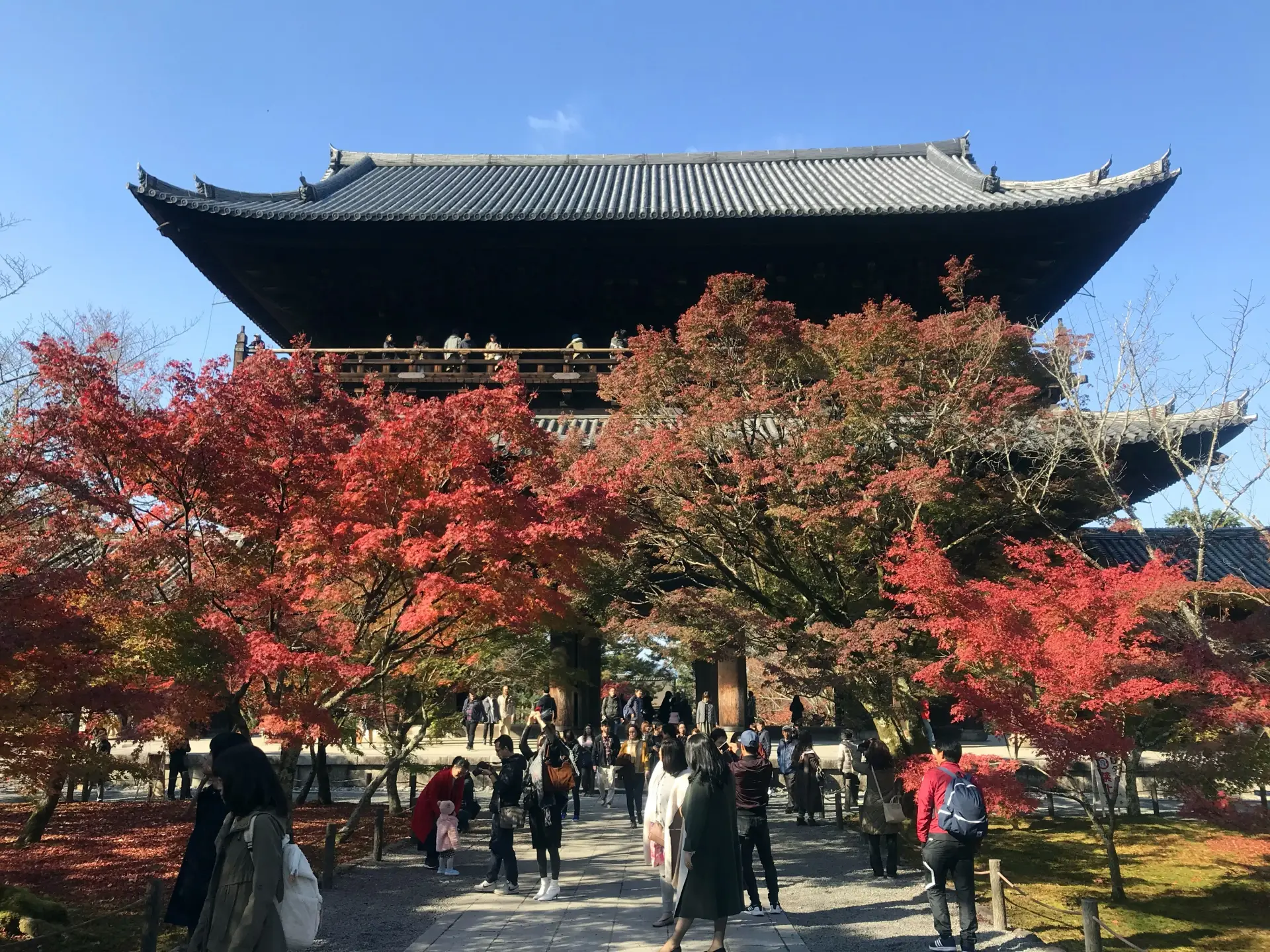
A large temple complex with traditional gates and aqueduct ruins, Nanzen-ji is about 25–30 minutes away by subway.
Recommended Day Trips by Train or Shinkansen
Nara, Japan's first permanent capital, lies just 45 minutes from Kyoto Station. The city features impressive temples, museums, and friendly deer roaming freely through Nara Park. The giant bronze Buddha statue at Todai-ji Temple ranks among Japan's most impressive religious artifacts.
Osaka's vibrant food scene and modern attractions make it perfect for day trips. The 15-minute Shinkansen journey provides quick access to Osaka Castle, Dotonbori entertainment district, and some of Japan's best street food.
For longer excursions, Hiroshima and nearby Miyajima Island offer profound historical experiences. The Peace Memorial Park and Museum provide important historical context, while Miyajima's famous floating torii gate creates unforgettable scenic memories.
Plan Your Visit
Be sure to arrive at Kyoto Station with extra time before your Shinkansen departure to ensure a smooth boarding experience. The station is large and can be busy, especially during peak travel seasons, so early arrival helps avoid stress and last-minute confusion.
Beyond being a transportation hub, Kyoto Station is a destination in itself. You can enjoy panoramic city views from the rooftop Skyway, explore shops and food halls featuring Kyoto specialties, or admire the station’s impressive modern architecture.
To make your travel even easier, book your Shinkansen tickets in advance through Japan Bullet Train. The service offers multilingual support and a QR code system for easy pickup at the station.

